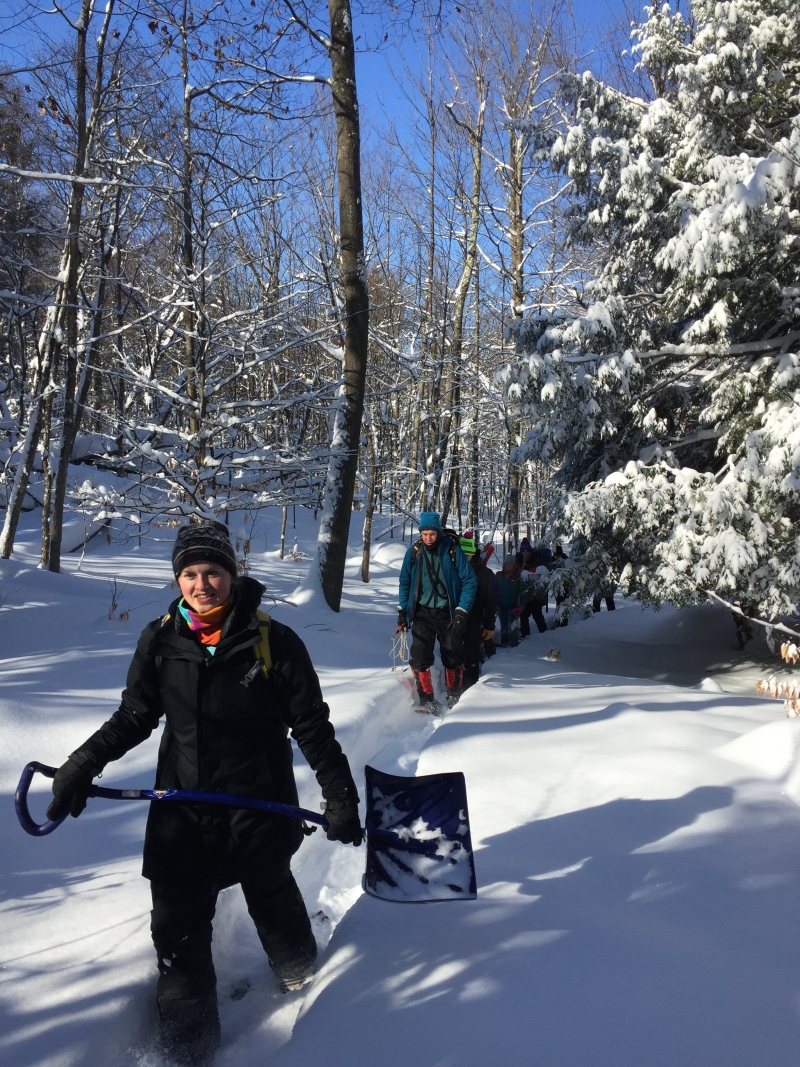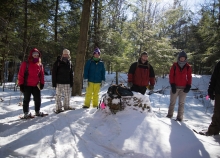
A Shelter for Ten
This winter Nature Up North is featuring a Winter Ecology Series, in which St. Lawrence University students in Dr. Karl McKnight's Winter Ecology course share their observations from a weekly field trip to Glenmeal State Forest in Pierrepont. We hope you enjoy their accounts from days spent in the woods examining the fascinating ways plants and animals endure the North Country winter.
By Alyson Wilson
The snow had been accumulating for the past week which is bad news for some, but wonderful news for the Winter Ecology Class. Over a foot of snow had fallen since our last visit, marking the beginning of a harsh and unforgiving winter. There is not a cloud to be seen in the brilliant blue sky, and the snow glistens like diamonds in the midday sun. The beautiful weather only adds to our growing excitement. The majority of the day will be dedicated towards building a quinzhee, or shelter made by hollowing out a pile of settled snow, that will be able to fit ten full grown adults.
We pack a couple tarps into our packs, strap on our snowshoes, then grab the shovels and make our way into Glenmeal State Forest. Half-way to the building spot we take a brief moment to stop and appreciate the hardships that animals have to face daily. This consisted of straying from the trail and experiencing the difficulty of trudging through knee-deep snow. It is a lot more energy consuming than you would think and within a matter of seconds I was exhausted. We continued on our way and finally reached the site that would soon be home to our quinzhee. With our packs hung on nearby branches, we wasted no time getting to work.

The class is divided into two tarp groups and one stick collecting group. The tarp groups had the responsibility of collecting the snow needed for building our quinzhee. Snow was shoveled onto the tarps, dragged back to the site, dumped into a large pile, and packed down. The stick group collected about 200 branches that would later be used as markers, which would help guide us in the process of digging out the quinzhee.
When the snow was finally piled up, we separated and headed to our individual study sites to give the snow some time to compact. At our sites we have the opportunity to relax and enjoy nature, monitor any animal activity, identify surrounding trees, or do anything else that we desire. At my site, which is usually filled with multiple animal tracks, I found no sign of animal life anywhere. Afterwards, our class met in the small playhouse where we had spent time last week. To our surprise, we were greeted with homemade marmalade cookies, hot chocolate, and hot tea. After warming up, we were off again to go dig out our quinzhee. Progress was made little by little as everybody took turns shoveling out the snow.

Finally, it was the moment we all anticipated. One by one we entered the quinzhee, until all ten of us were happily situated inside.
By working together, we were able to successfully construct a beautiful snow shelter. At the end of the day we were pretty exhausted, yet we still left with big smiles on our faces!

